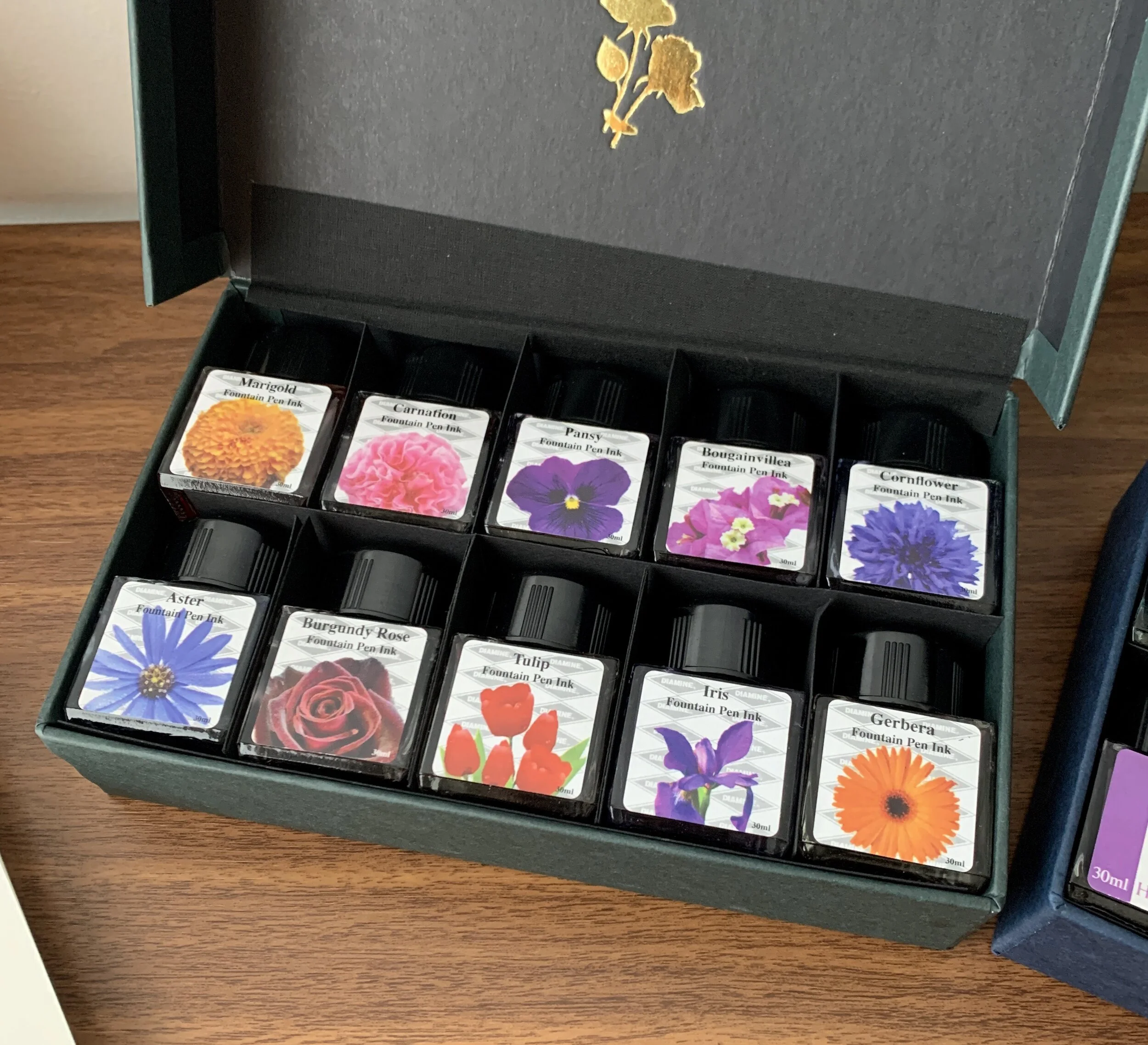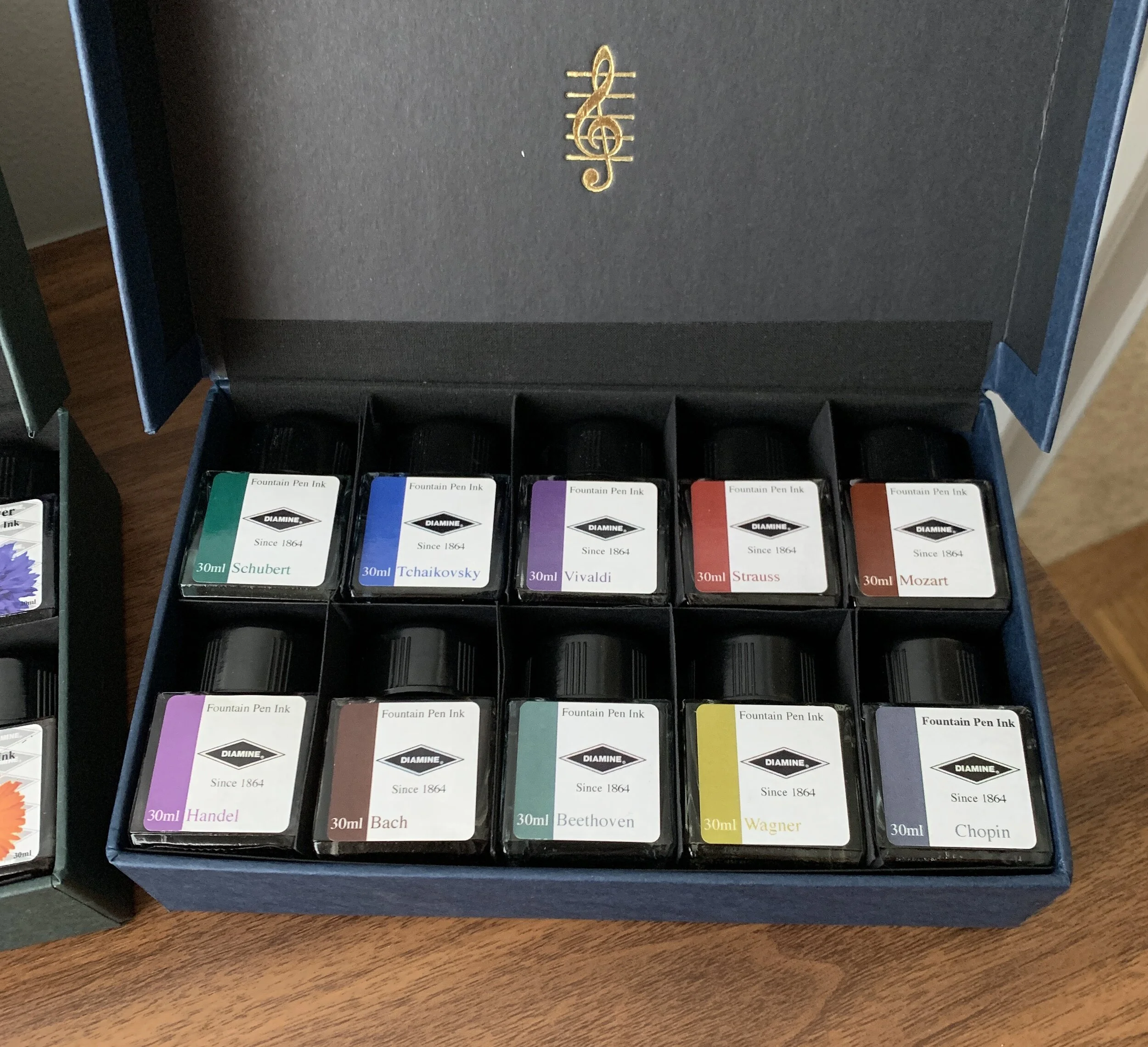A couple of weeks ago I posted a review of “Vivaldi” and “Strauss,” two inks from Diamine’s ten-bottle Music Set. Since then, I’ve had a chance to sample and swatch the other eight Music inks, each of which is themed around a different composer, as well as the ten inks from Diamine’s other ink set, Flowers. I’m pleased with both purchases - for years I held off ordering these sets because I thought the colors would appear boring, or possibly duplicative of Diamine inks I already owned. Not so - especially Music. I think I’m going to enjoy using these darkly muted colors, especially at work and in other professional settings.
Chopin (a dark blue-grey) and Tchaikovsky (a rich blue) are the two inks from the Music Set that I have lined up to use next, once my fills of Strauss and Vivaldi run out.
Marigold and Cornflower both caught my eye, as did Bougainvillea.
Takeaways and Where to Buy
As I mentioned in my review of “Vivaldi” and “Strauss,” Diamine inks are generally regarded as safe inks that don’t cost a lot of money and behave well on the page in terms of feathering and bleed-through. I’ve not had any issues with Diamine in this regard. The one quibble I do have with Diamine inks is a tendency for some colors to precipitate out on the nib in the form of “nib crud,” which appears as a crust around the tines of the nib that you need to periodically clean. It’s not dangerous - it’s just precipitate from certain dyes used in the ink - and it happens to me most often with oranges and greens if I let the pen sit unused for a few days. So far I’ve not noticed it with any inks in either of these two sets, but I’ve also not used these inks extensively.
I purchased both sets pictured here from site sponsor Appelboom. The Diamine Music Ink Set and Flower Ink Set are priced at just under 50 Euros, which comes to around 5 Euros per 30ml bottle. Given that I generally like all of the colors in both sets, it worked out to a pretty good deal for me. I’ve heard anecdotally that you can purchase refills of the individual inks directly from Diamine, but I’ve been unable to find a link on their site and suspect you would need to reach out to them directly.
Disclaimer: I purchased the inks featured in this review from site sponsor Appelboom, using store credit generated through the Appelboom affiliate program, which is one way I support the site and obtain new products for review. This post contains affiliate links.

